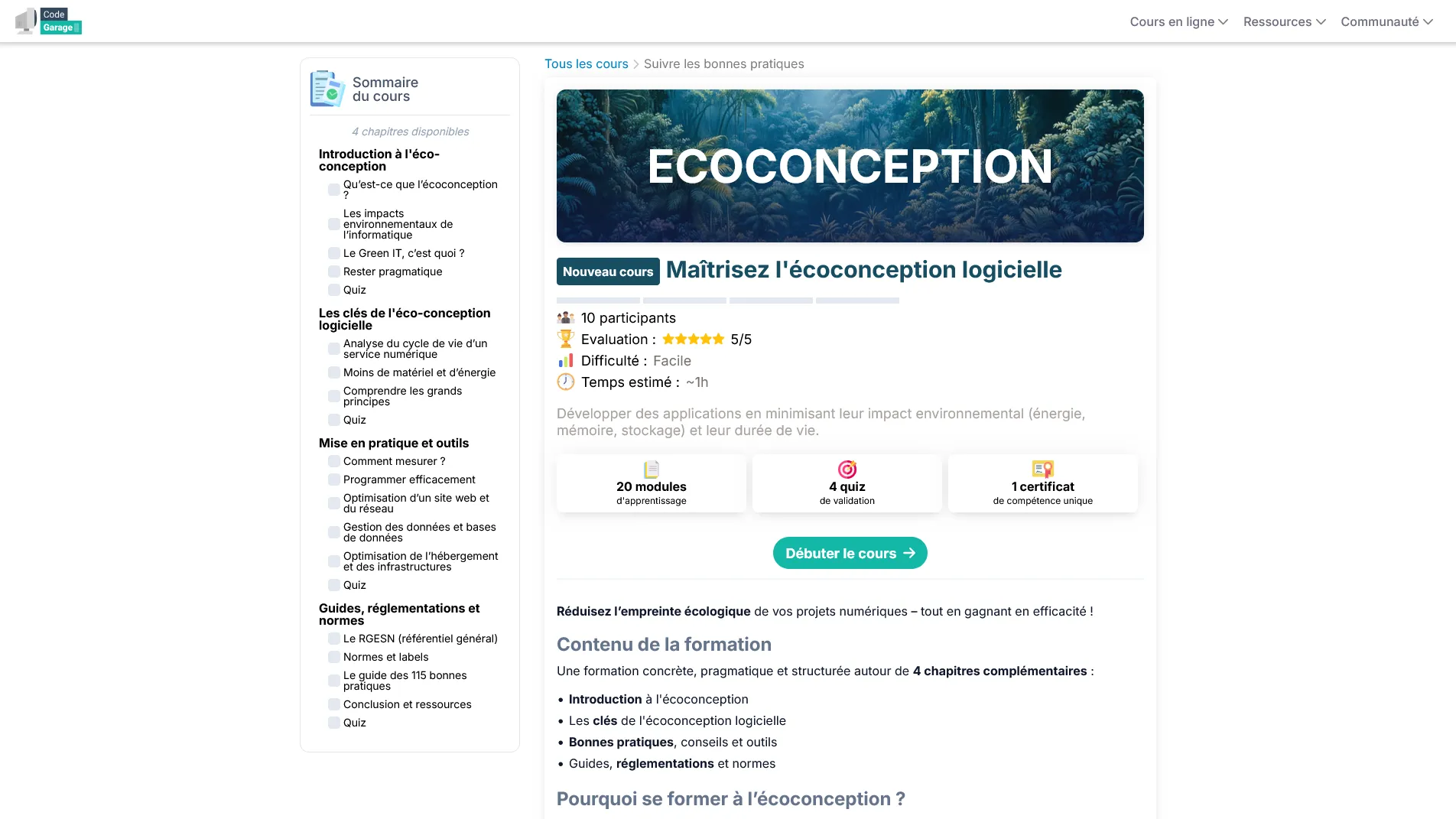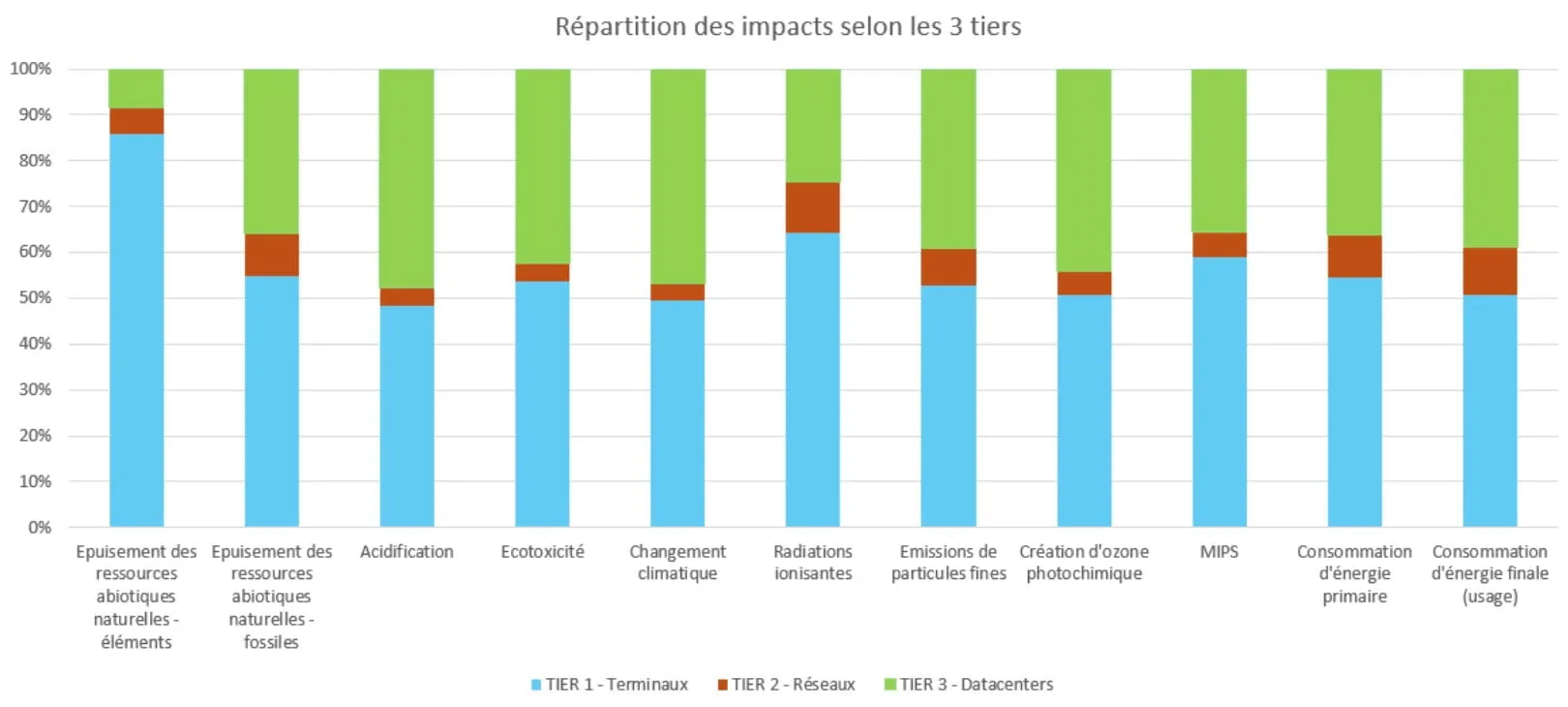Why write this?
Despite my profound green transition and desire to use technology for the greater good, I always had bias concerning the impact of the tech industry.
I thought digital was reducing the carbon footprint of old physical processes (like printing everything), and big tech was already doing what they can by using 100% renewable energy (yes, the Google Cloud sustainaibility page told that, not long ago).
However, because of my endeavors with my marti startup, I became very interested into lifecycle analysis (a method to assess environmental impacts of products and services), ecodesign, and greenwashing-busting.
So when Nicolas from Code-Garage offered to buy an ecodesign course I would write for developers, I was hooked. This was the perfect opportunity to challenge my bias and adopt new, greener coding habits while popularizing them.
The journey
I began this project by researching every resource on the internet I could find about tech ecodesign. I didn’t find a lot of content, actually.
There was the Green Software Foundation and the Green Web Foundation which were proposing frameworks and tools to assess and reduce the impact of mainly web projects.
In French, I found more specialized and education-oriented content by the Green IT collective, the Designers éthiques organization, and the ISIT.
Based on these resources and the opportunity I saw to build a more complete developer-focused course, I drafted the outline.
On Code-Garage, a course is divided into chapters, which are themselves made of small-sized modules. I used ChatGPT to help me refine the plan and where each notion will be introduced.
This development came up:
- Start from studies on the environmental impact of digital services: which lifecycle step is the most impactful?
- Formalize 4 horizontal principles to reduce global impact.
- Practical advice to apply them to the entire tech stack.
- A presentation of existing frames of reference, norms, and eco-labels.
I wrote each module one after another, then asked the AI to compare my initial plan for this module with the result.
It helped produce clearer and more to the point explanations.
The part that took the most time was a state-of-the-art analysis of the environmental impact of the tech industry.
I wanted every number from a reliable source.
I mainly based my research on the Green IT world report and the latest ADEME-ARCEP French study. But work on this matter is still scarce.
Nicolas reviewed the course and made some edits to publish it on Code-Garage, but the content was unmodified.
This post was written on LinkedIn to announce the release.
I reached out to some Green IT experts in my network, like Callista Spiteri, to gather feedback.
She pointed me to updated research and noticed some improvements. It made me rewrite the tech industry impact part of the course, which was necessary but not trivial.
What’s next?
I still need to reach experts and developers to gather feedback on the course.
Because I think this knowledge should be publicly available, I plan to release it open-source and enrich it with contributions from the community.
While writing it, I also found the need for tools and templates that could help ecodesigning common digital services. In fact, this website is an experiment from one of those ideas.

